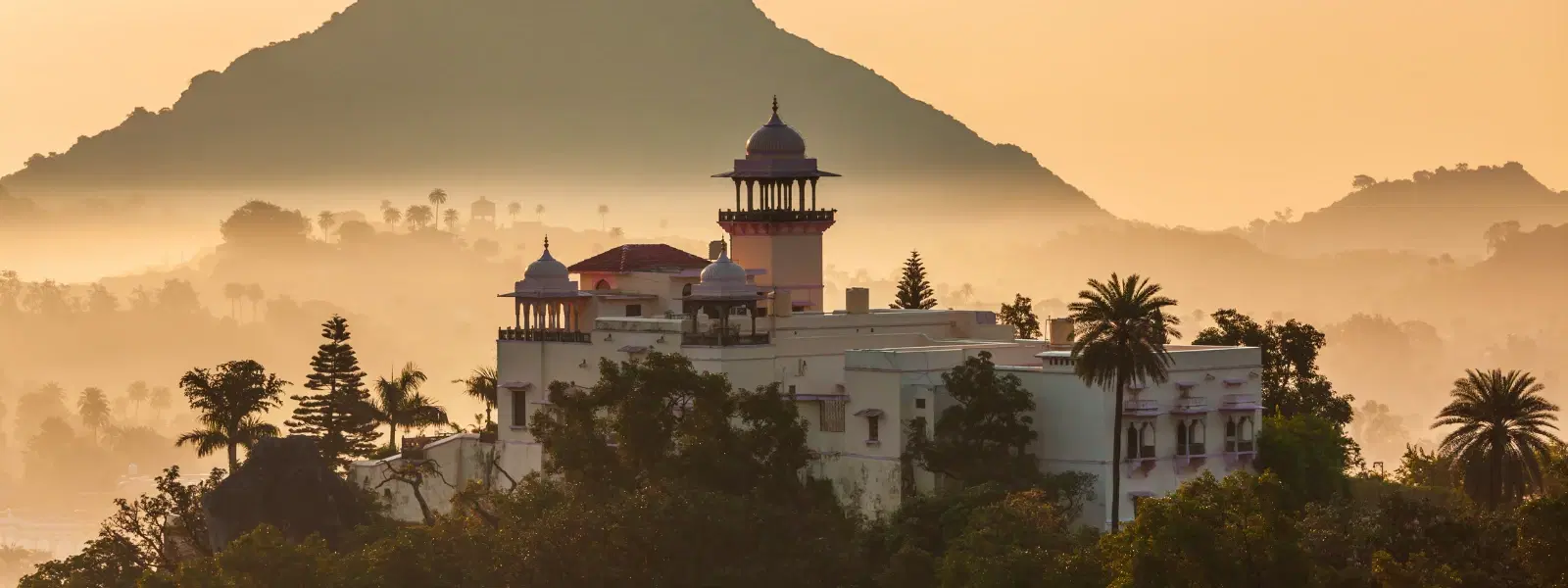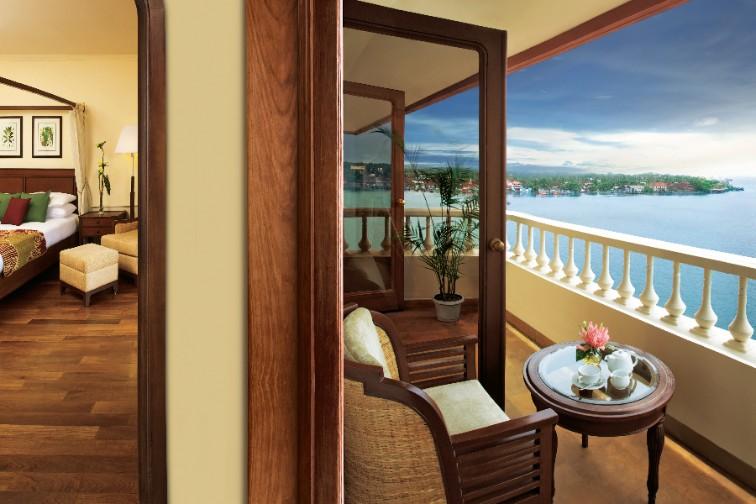
Hotels
•05 min read

Mount Abu, the crown jewel of Rajasthan, beckons travelers with its magical blend of serene landscapes and cultural charm. This blog post is your ultimate checklist for planning a memorable visit to this picturesque hill station. Whether you're curious about Mount Abu's seasonal weather, the ideal times for hotel bookings, or simply need expert travel tips, you're in the right place. By the end of this guide, you'll know exactly when to visit to experience the best of Mount Abu.
Mount Abu is unique among Rajasthan's destinations. Unlike the desert heat dominating much of the state, this hill station boasts a refreshing climate that varies markedly throughout the year. Classified as a hill station, Mount Abu experiences a mix of cool breezes and moderate temperatures that make it an attractive getaway regardless of the season.
The overall weather is influenced by its elevation and natural surroundings, resulting in three primary seasons: summer (March through June), monsoon (July through October), and winter (November through February). Each season brings its own charm and challenges, making it essential for travelers to plan accordingly.
Summer: During summer, temperatures in Mount Abu are warm yet generally tolerable, especially when planning activities during the cooler early mornings and late evenings. The heat can be managed with proper hydration and light clothing, making it a workable season for sightseeing and outdoor exploration.
Monsoon: Monsoon in Mount Abu transforms the landscape into a lush paradise. The rains rejuvenate the flora, leaving the hills bursting with greenery. However, heavy downpours can occasionally limit outdoor activities, so it's wise to plan indoor pursuits or scenic drives on rainy days.
Winter: Winter is the peak tourist season for Mount Abu. With cool, crisp air and clear skies, this season is ideal for outdoor excursions like hiking, temple visits, and enjoying the serene beauty of the hill station. The comfortable weather during these months makes winter the best season overall for visiting Mount Abu.
To truly enjoy everything Mount Abu has to offer, planning your trip between November and February is highly recommended. This period, known as the peak season, is marked by cool and comfortable weather that is perfect for exploring the local attractions. During these months, the climate encourages an active day filled with hikes, temple tours, and leisurely strolls through the town, ensuring a fulfilling travel experience.
November and December: These months are not just about pleasant weather; they are also the time for numerous festivals and cultural events that add vibrancy to your visit. The crisp air and clear skies provide a perfect backdrop for exploring illuminated streets and historic sites.
January: Known for its serene charm, January in Mount Abu offers picturesque winter mornings that are truly unparalleled. The cool weather is a refreshing break from the heat experienced in other parts of Rajasthan.
February: As winter wanes, February brings mild weather that is still comfortable for outdoor activities. This month is ideal if you prefer fewer crowds while still enjoying the pleasant climate.

While the winter season is perfect for a getaway, there are times when planning a trip might not be ideal. The peak summer months of May and June can see elevated temperatures that might hamper outdoor activities and sightseeing. Similarly, the monsoon period from July to October is unpredictable. Although the rains bring a unique beauty to the region, they can also make travel challenging due to sudden heavy showers and potential roadblocks.
When visiting Mount Abu in the summer, a few tips can help you stay comfortable and enjoy your trip to the fullest:
Wear lightweight clothing to beat the heat.
Stick to early morning and late evening outings for sightseeing.
Carry a bottle of water to keep hydrated throughout the day.
Plan indoor or shaded activities during the peak midday hours.
Traveling during the monsoon requires a slightly different approach. The enchanting greenery and cooler air are inviting, but preparation is key:
Always have rain gear, such as umbrellas and waterproof jackets.
Choose waterproof footwear to navigate wet and slippery paths safely.
Combine outdoor sightseeing with indoor attractions to avoid prolonged exposure to heavy rainfall.
Consider scenic drives as a relaxed way to enjoy the region's beauty without getting soaked.
Winter is a favorite season among visitors, but it comes with its own set of considerations. Here are some pointers for a comfortable winter stay:
Be sure to pack warm clothing, especially for the cool evening breezes.
Book accommodations well in advance, as hotels fill up quickly during peak tourist months.
Plan your daily itinerary to include both outdoor adventures and cozy indoor experiences.
Check weather updates regularly to plan your activities accordingly.
The winter season, stretching from November to February, is undoubtedly the most popular time for Mount Abu vacations. During these months, influxes of tourists drive a significant demand for hotel accommodations. With the pleasant weather attracting families, honeymooners, and cultural enthusiasts alike, hotel rates tend to be on the higher side due to increased demand.
Understanding these patterns can help you plan your stay efficiently. If you enjoy bustling atmospheres and vibrant local events, winter might be your go-to season. However, if you prefer tranquility and budget-friendly options, consider visiting during the shoulder or off-peak seasons.
For those planning a winter escape, it is highly advisable to book your hotel at least two to three months in advance. This ensures you have access to the best accommodations and room choices, especially in popular hotels known for their scenic views and excellent amenities. Booking in advance also gives you a chance to review various options and secure a deal that fits your budget.

Alternatively, visiting during the off-peak months, such as March or October, offers access to premium hotels at discounted rates. Travelers can enjoy comfortable stays without the premium price tag often associated with the high season.
Seeking the perfect balance between cost and experience? Consider planning your trip during the shoulder seasons, particularly in March or October. These months offer milder weather, fewer crowds, and significant discounts on hotel bookings. Booking during these periods not only provides you with budget-friendly deals but also the opportunity to enjoy a quieter side of Mount Abu, allowing for a more relaxed and intimate experience with the natural beauty of the region.
Pro Tip for Your Mount Abu Adventure
Did you know that visiting Mount Abu during its shoulder seasons (March or October) not only offers pleasant weather but also lets you save significantly on hotel bookings? Plan ahead and enjoy the best of both worlds—scenic beauty and affordability!
November to February offers the coolest and most pleasant weather, making it the ideal time for a trip.
Mount Abu experiences its monsoon season from July to October, which brings heavy rains and lush greenery.
It is best to avoid visiting during the peak summer months of May through June due to high temperatures and during heavy monsoon periods when outdoor activities become challenging.
Hotel bookings peak during November to February when the weather is at its best, so early reservations are highly recommended.
In January, temperatures typically range between 4°C and 20°C, offering a cool retreat from the summer heat.
Timing your trip to Mount Abu is essential in maximizing your vacation experience. Understanding the seasonal weather, planning your activities accordingly, and booking your hotel early can turn your holiday into an unforgettable adventure. With cool winter mornings, refreshing monsoon landscapes, and budget-friendly shoulder seasons, Mount Abu has something to offer every traveler. Enjoy your journey through this serene hill station and let its natural charm and cultural heritage enchant you.